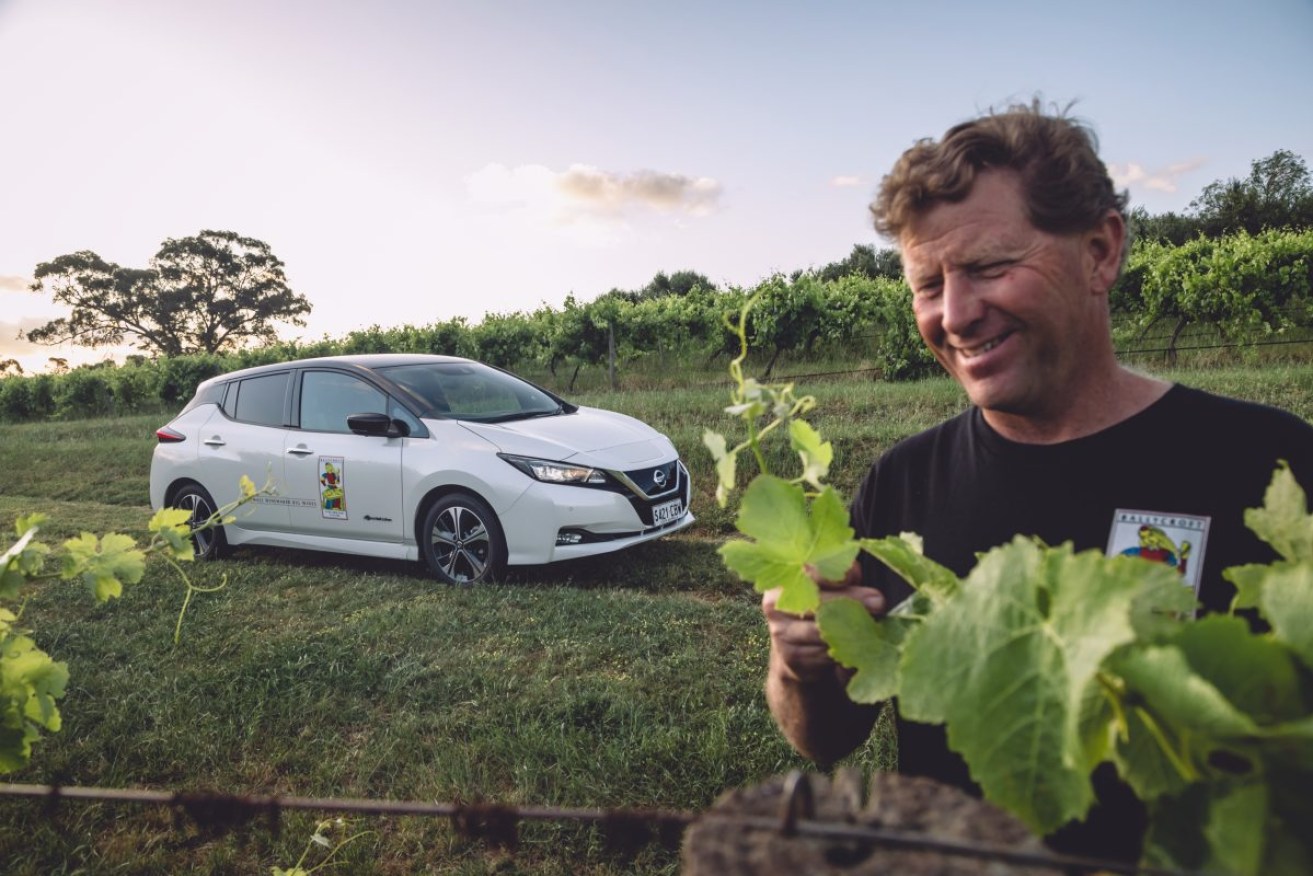Electric car powers Barossa winery at night
A Barossa Valley vineyard owner is running his business at night from solar energy stored in an electric car.

Ballycroft Vineyard's Joseph Evans with his electric car at Greenock in the Barossa. Photo: AAP/supplied
Power harvested by Joseph Evans’ Nissan Leaf during the SA Power Networks trial is so far delivering for Ballycroft Vineyard.
Evans said electricity bills for the winery used to cost $6000 a year, and were still $2000 a year even after installing solar panels.
So he signed up to the trial and by using his electric vehicle to store solar energy and power the business overnight, Evans said he was now making money instead of spending it on electricity.
“It is the holy grail of EV ownership,” he said.
“We make nearly $3000 a year by putting a little bit of power back in the grid.
“Our solar completely runs our whole property – runs the pumps for the vineyard, runs the rainwater pumps for the house – so we’re completely self-sufficient.”
Evans said he used his Nissan Leaf to make wine deliveries during the day, returned to charge its battery from solar panels at midday, and used it to power the winery overnight.
A wall-mounted charger from Victorian firm JET Charge managed electricity coming and going from the vehicle, and the company will open orders for the Wallbox Quasar hardware to South Australian consumers in late January.
JET Charge founder Tim Washington said the winery project was a fun way to show how vehicle-to-grid technology worked, but when widely available it could help many households cut power bills.
“It’s cool that it’s a winery, but it’s actually a demonstration of how bi-directional charging will just fit into our everyday lives and we won’t need to think of it as a project,” he said.
“You’ll plug your EV into the power and that’s pretty much it. And the low barrier to entry once we pass all the technical issues means the adoption will be swifter than people think.”
However, users will need a compatible vehicle to use the technology, and only the Nissan Leaf and Mitsubishi plug-in hybrid currently support it in Australia.
Nissan electrification national manager Ben Warren said more car makers should support the technology because vehicle batteries were designed to cope with “extreme” demands, and powering homes did not demand the same “swings”.
“For the customer, the benefit is reducing your energy bill,” Warren said.
“For the grid, it’s also a pretty big bonus.
“All of a sudden our cars have gone from something that sits in our driveway, doing nothing, to being more connected in our lives.”
-with AAP




